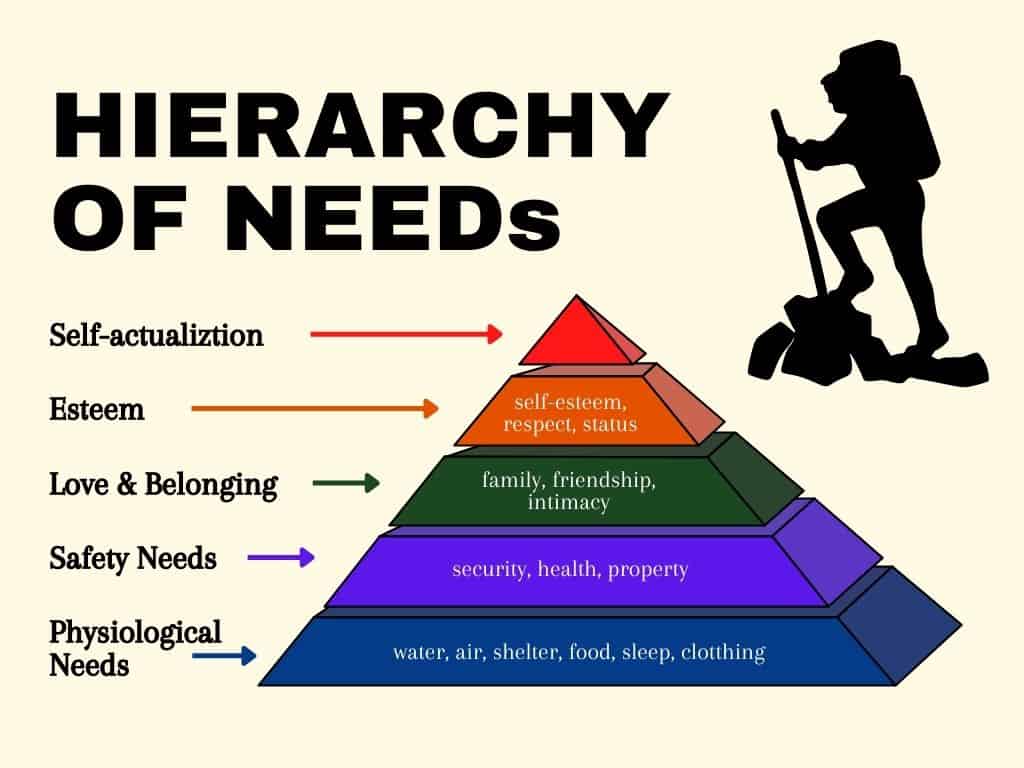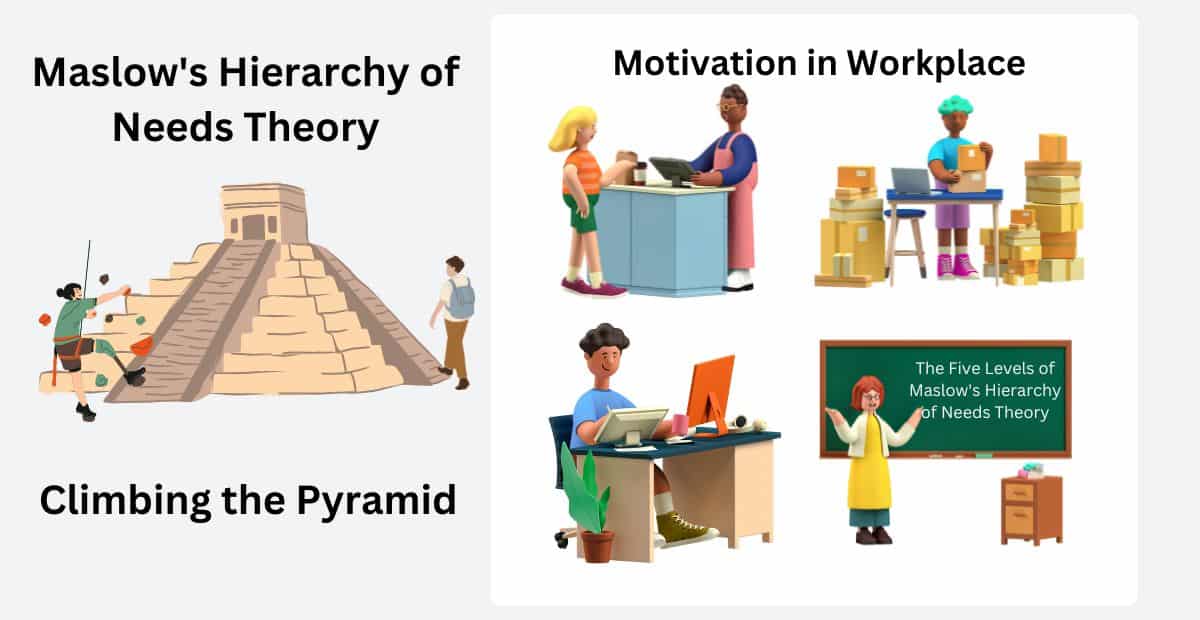Imagine you are living in a society where every person has the power to unlock their true potential. What if there was a blueprint that could guide us on this transformative journey?
Welcome to the fascinating world of Maslow’s Hierarchy of Needs theory, where understanding basic human needs can unlock the secrets of personal growth and motivation.
From our basic survival needs to the pinnacle of self-actualization, this remarkable theory provides a deeper understanding of what drives us as human beings. Join us as we embark on an exciting quest, climb the pyramid of needs, and uncover the keys to unlocking a fulfilling and purposeful life.
Abraham Maslow is a prominent figure in the field of psychology. He revolutionized our understanding of human behavior and motivation. Born in 1908, Maslow devoted his life to the study of what makes individuals thrive and flourish.
His most notable contribution known as Maslow’s Hierarchy of Needs theory is a groundbreaking framework. It depicts human needs in a hierarchical structure.
By emphasizing the importance of satisfying basic physiological needs before advancing to higher-level desires, Maslow sheds light on the complexity of human motivation.
His contributions still influence fields like psychology and management studies. It enables people to realize their full potential and become self-actualized.
Understanding Maslow’s Hierarchy of Needs is crucial for personal growth and motivation. By understanding the different levels of human needs and their interdependence, individuals can identify their areas of growth and work to meet those needs.
This information offers a personal development roadmap, enabling people to prioritize their goals and focus on those that can have the greatest impact.
Furthermore, Maslow’s theory sheds light on the underlying motivations that drive human behavior, helping individuals align their actions with their core needs and values.
Ultimately, by understanding and applying this theory, individuals can unlock their true potential and live fulfilling lives.
Must Read Guide- Herzberg’s Two-Factor Theory: Understanding Motivation in the Workplace
Table of Contents
The Five Levels of Maslow’s Hierarchy of Needs Theory
Level 1: Physiological Needs
Basic needs for survival, such as food, water, and shelter, are known as physiological needs. Examples of physiological needs include satisfying hunger, quenching thirst, and finding a safe place to rest. When physiological needs are not met, individuals experience significant physical and emotional distress, which affects their overall well-being.
Level 2: Safety Needs
Security need refers to the need for personal safety, stability, and protection from harm. Examples of security needs include physical security, financial security, and a stable living environment. Security needs play an important role in establishing a sense of stability, reducing anxiety, and overall well-being.
Level 3: Love and Belongingness Needs
Love and affiliation needs include the desire for social connection, affection, and a sense of belonging. Examples of the need for love and belonging include forming meaningful relationships, having a supportive family, and experiencing friendships.
Social connections and relationships are vital to people because they contribute to emotional well-being, fulfillment, and a sense of connectedness
Level 4: Esteem Needs
Esteem needs to involve the desire for self-esteem, respect from others, and recognition of accomplishments. Examples of esteem needs include self-confidence, feeling valued by others, and receiving recognition for one’s abilities.
The need for esteem significantly affects a person’s self-confidence, self-worth, and overall psychological well-being.
Level 5: Self-Actualization Needs
Self-actualization needs to relate to the realization of one’s full potential, personal growth, and fulfillment. Examples of self-actualization needs include pursuing creative endeavors, seeking personal growth, and fulfilling one’s unique purpose.
Self-actualization is a transformational process that involves achieving personal goals, finding meaning in life, and reaching a state of self-fulfillment.
By understanding and addressing these five levels of need, individuals can navigate their journey of personal growth, increase motivation, and strive toward self-actualization, ultimately leading to a more fulfilling and purposeful life.
The Pyramid Analogy and its Implications

Understanding the hierarchical nature of the needs pyramid
The needs pyramid, like a pyramid-shaped structure, represents different levels of human needs in a certain order. We have basic physiological needs, which must be met before we can progress to higher-level needs. Each level builds on the previous one, forming a hierarchical structure.
The concept of progression and the interdependence between levels
Maslow’s theory highlights that individuals usually try to satisfy lower-level needs first before moving up the pyramid. For example, we focus on satisfying our basic physiological needs like food and shelter before seeking safety, social connection, self-esteem, and ultimately self-actualization.
There is a natural progression and interdependence between these levels, as higher-level needs become important when lower-level needs are adequately met.
The implications of unmet needs and their impact on psychological well-being
When individuals are unable to meet their needs at a certain level, it can adversely affect their psychological well-being. For example, if basic physiological needs are not met, individuals may experience hunger, fatigue, and stress, which may hinder their overall well-being.
The same is true for unmet needs at other levels, such as safety, love and belongingness, esteem, or self-actualization, which can result in feelings of insecurity, loneliness, poor self-esteem, and unhappiness. Recognizing and addressing unmet needs is critical to psychological well-being and personal growth.
Applying Maslow’s Hierarchy of Needs Theory in Different Contexts
A. Maslow’s theory in the workplace
To motivate employees by fulfilling their needs
Maslow’s theory provides valuable insight into employee motivation. Every employee has different needs that affect their performance and job satisfaction.
By understanding and addressing these needs, employers can create a work environment that fosters motivation and engagement.
For example, recognizing and meeting employees’ physiological needs through fair compensation, access to breaks, and a comfortable work environment can help ensure their well-being and productivity. Creating a supportive work environment based on the hierarchy of needs
Creating a supportive work environment based on the hierarchy of needs
and classification of needs can guide employers in creating a supportive work environment. By considering different levels of demand, employers can design policies and initiatives that meet those needs.
For example, providing workplace safety and security measures addresses employees’ safety needs, while promoting teamwork and building positive relationships fulfilling their need for love and belonging.
Additionally, providing opportunities for growth, recognition, and autonomy can help employees meet their needs for esteem and self-actualization, leading to higher job satisfaction and motivation.
By implementing Maslow’s theory in the workplace, employers can create an environment that not only fulfills employees’ basic needs but also encourages their personal and professional growth, resulting in a motivated and fulfilled workforce.
B. Maslow’s theory in personal growth and self-development
Using the hierarchy of needs as a framework for personal growth
Maslow’s hierarchy of needs theory can serve as a valuable framework for individuals seeking personal growth and self-development. By understanding the different levels of need, one can assess which needs are currently unmet and focus on meeting them.
For example, if there are lingering concerns about safety or belonging, addressing these needs can create a solid foundation for personal growth.
Identifying areas of improvement and setting goals based on the hierarchy
Hierarchies of needs can help individuals identify areas for improvement and set goals consistent with their overall well-being and self-actualization.
By examining each level of the pyramid, one can assess where they may be lacking and work to fill those needs. This process enables individuals to set specific, actionable goals that target their unmet needs, resulting in personal growth and a sense of fulfillment.
By applying Maslow’s theory, individuals can gain clarity about their needs, prioritize their personal growth efforts, and set meaningful goals that align with their intrinsic motivation.
It provides a structured approach to self-development, empowering individuals to improve and reach their full potential.
V. Criticisms and Limitations of Maslow’s Hierarchy of Needs
Maslow’s hierarchy of needs theory has been criticized from various perspectives in the field of psychology. Some argue that the theory assumes a rigid hierarchy and oversimplifies human motivation by ignoring the complexities of individual experience.
Other questions were raised on the universality of the theory. Critiques argue that cultural, social, and personal factors affect the prioritization of needs differently for individuals that missing in the theory.
Cultural variations in needs and motivations may affect the applicability of theories across different populations. Understanding these limitations helps us approach theory with critical thinking and adapt it to the specific context and diversity of individuals.
VI. Conclusion
Throughout this exploration of Maslow’s Hierarchy of Needs, we fall into five levels of needs, from physiological to self-actualization. We examined how these needs are interrelated and affect individuals’ well-being and motivation. In addition, we explored the application of the theory to the workplace and personal growth.
Understanding Maslow’s Hierarchy of Needs theory carries great significance. It provides us with a comprehensive framework for understanding human motivation and prioritizing our efforts toward personal growth. By effectively addressing our needs, we can increase our overall well-being, satisfaction, and fulfillment.
Despite criticisms and limitations, Maslow’s theory remains relevant and influential in understanding human needs. Its lasting legacy lies in its ability to guide us toward self-actualization, helping us realize our true potential. By acknowledging its limitations, being aware of cultural biases, and adapting it to individual contexts, we can harness the power of Maslow’s theory to create supportive environments for personal growth, motivation, and various areas of life.
In conclusion, Maslow’s hierarchy of needs theory serves as a guiding light on our journey toward personal fulfillment, providing valuable insight into what drives us as human beings. By understanding and applying this theory, we can open the door to a more purposeful and fulfilling existence.
Let me share with you what you have learned from “Maslow’s Hierarchy of Needs Theory: Climbing the Pyramid“

